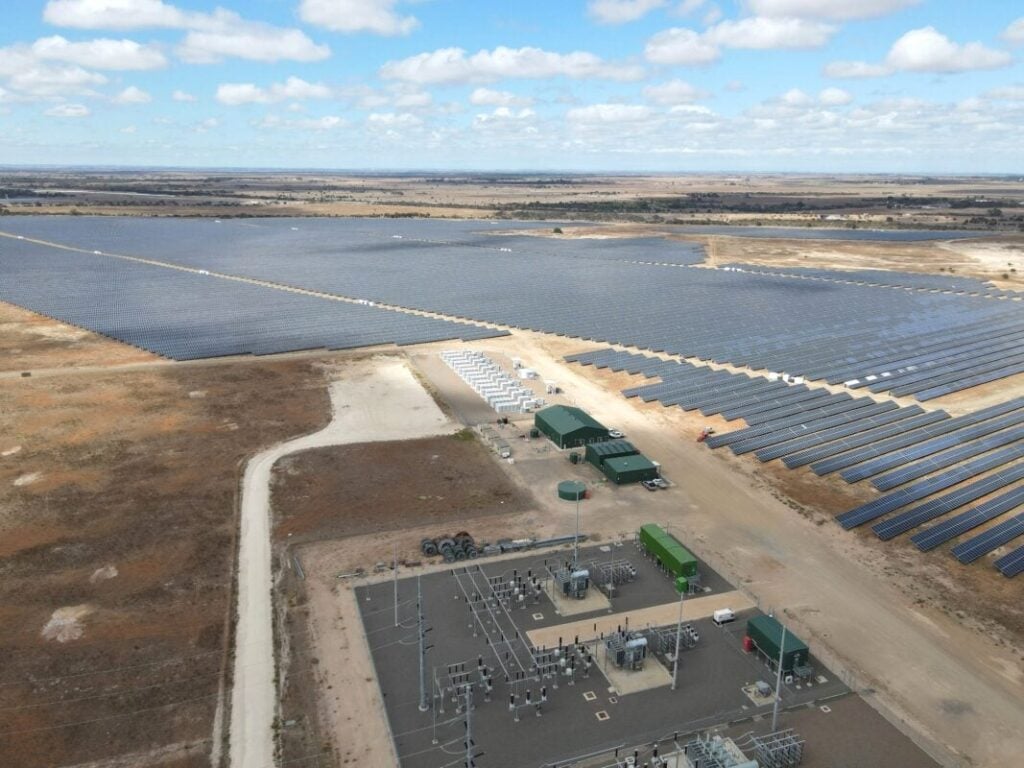
Singaporean independent power producer (IPP) Vena Energy has added a 41.5MW battery energy storage system (BESS) to a 87MW solar PV power plant in South Australia.
The addition of the BESS marks the successful commissioning of the Tailem Bend 2 Hybrid Project. The solar-plus-storage site is situated across 207 hectares in Tailen Bend, around 90km southeast of the state capital, Adelaide.
Try Premium for just $1
- Full premium access for the first month at only $1
- Converts to an annual rate after 30 days unless cancelled
- Cancel anytime during the trial period
Premium Benefits
- Expert industry analysis and interviews
- Digital access to PV Tech Power journal
- Exclusive event discounts
Or get the full Premium subscription right away
Or continue reading this article for free
Adelaide-headquartered renewable energy developer ZEN Energy will purchase renewable energy from the Tailem Bend 2 solar-plus-storage project, underpinned through a long-term commitment from the South Australian Chamber of Mines and Energy (SACOME) Joint Electricity Purchasing Group.
This agreement will support customers, including the majority of local Foodland and IGA supermarkets, Viterra, Central Irrigation Trust, Adchem, and Hillgrove Resources.
Vena confirmed that the project will connect to the National Electricity Market (NEM) via ElectraNet’s Tailem Bend Substation from the Coorong 2 Substation. The BESS will serve as a load and generator for the network by capturing low-cost renewable energy to be discharged at peak demand.
“Our system enables simultaneous export of solar power to the grid and independent operation of the battery for energy export or storage,” said Owen Sela, head of Australia for Vena Energy. “By optimising existing grid infrastructure, we are enabling renewable energy to be dispatched when needed, delivering cost-effective power to South Australia.”
“This ability to store surplus energy and meet high-demand periods advances our mission to accelerate the energy transition while ensuring communities benefit from a smarter, more resilient energy system that supports the state’s 2030 emissions targets and Australia’s net zero future.”
Read the full version of this story on our sister site, Energy-Storage.news.






